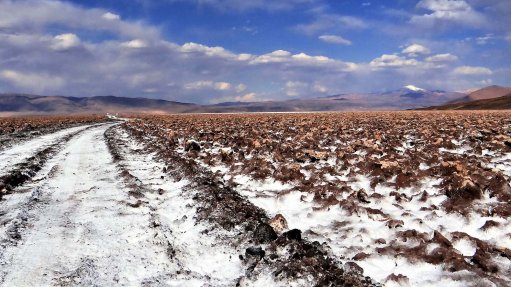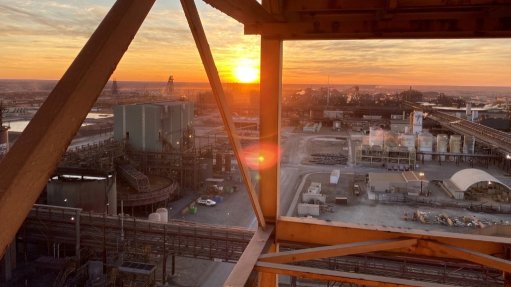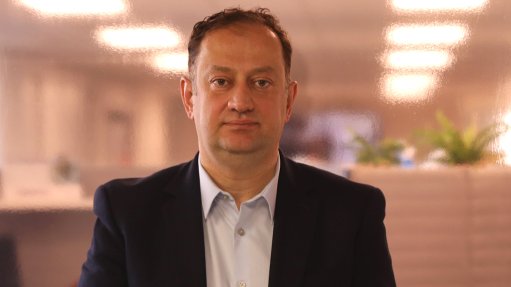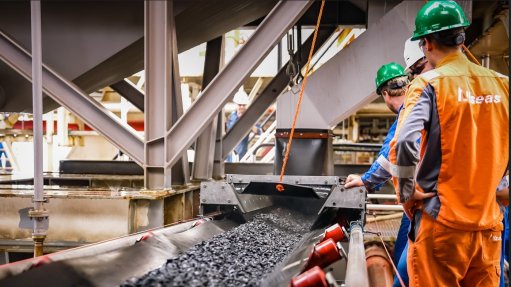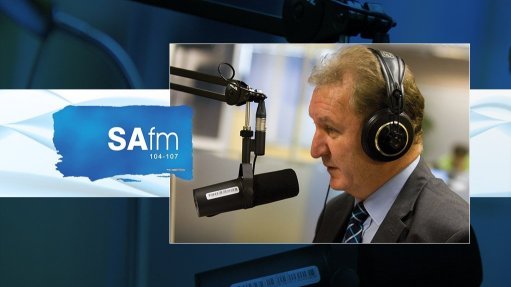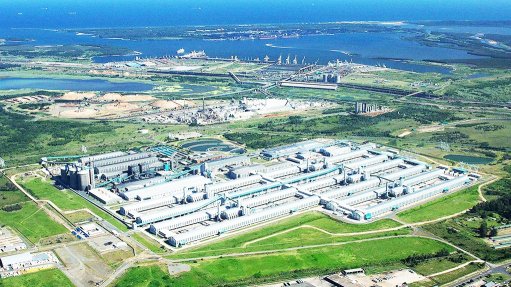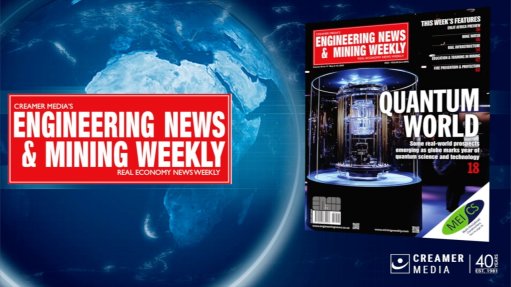Emmerson’s Moroccan potash project progressing well
The development and financing of Aim-listed Emmerson’s Khemisset potash project, in Morocco, continued to make steady progress in the second quarter, the company said on July 11.
Exploration work had led to cost effective construction options being discovered, while the portal and decline location had been updated, which was expected to deliver technical benefits and capital expenditure savings.
All key infrastructure locations for the mine were established following the successful completion of geotechnical drilling and additional electrical resistance tomography (ERT) surveys, Emmerson said.
The further drilling of deep holes was supplemented by directional drilling and four additional ERT surveys. The deeper drill holes had the dual purpose of further understanding the lithography around the declines to assist in finalising the precise siting for key infrastructure to take advantage of the most competent ground conditions.
One of the holes was extended to provide detailed data to feed into the design of the deep well injection for some of the process tailings.
The 8 km of ERT surveys covered the tailings storage facility (TSF) area and the mining infrastructure area (MIA) for the best possible understanding of rock competence for foundations.
MINE DEVELOPMENT
The mine site location was adjusted following geotechnical work, wherein early results of the decline alignment drilling had demonstrated potentially disadvantageous geological conditions, from a constructability perspective, for the previously proposed portal location.
“Further to this, more recently completed decline alignment drilling evidenced better-than-anticipated ore conditions at the end of the decline, which would be potentially sterilised if the existing portal and decline philosophy was adopted,” Emmerson said.
Based on further geological information, developed from boreholes and ERT surveys, an area was identified with more advantageous constructability conditions, and in a location which positioned the decline in a more appropriate area.
The new portal location was approved as the go-forward case for more detailed engineering, the company said.
Meanwhile, the remaining MIA infrastructure layout was proposed and approved.
“Engineering is well under way on each of the key infrastructure areas. Civil and structural work has now commenced following the decisions made with regard to mine site and portal locations,” Emmerson said.
The revised site location will use fewer private land plots and more “collective land” – land owned by the State – which produces a useful cost benefit in the land acquisition programme, the company stated.
In terms of tailings, Emmerson said the location of the TSF remained unchanged.
Early basic engineering discussions centred on finding the optimal solution for the transport of tailings from the mineral processing facility to the TSF – either piped as a slurry or conveyed as a dry material.
Although both systems would be effective and meet project requirements, the decision was made to progress with a dry tailings system.
The key advantages of the dry tailings system were the environmental benefits of reduced footprint, reduced water consumption and also reduced risk in the event of any extreme weather events, Emmerson stated.
Basic engineering on the process plant was also well advanced with process flow diagrams, piping and instrumentation diagrams, as well as function specifications, now completed.
Specifications were chosen for the mechanical equipment and electrical and automation drawings were ongoing, the company said.
ENGINEERING WORK
Emmerson said all the engineering packages, including basic engineering with engineering company Reminex and process engineering with engineering company Barr Engineering, were advancing.
In conjunction with Reminex, an improved solution for process plant water supply was investigated in detail and approved as the go-forward case for further design work.
Emmerson explained that, whereas in the 2020 feasibility study the mine site water supply was envisaged to be from the Ouljet Essoltane dam, it would now be taken either partially or fully from the Khemisset wastewater treatment plant, with the ultimate goal of requiring no fresh water for the process.
“This is a scientifically robust and environment-friendly approach that both reduces risks of water supply to the project, and further reduces environmental impacts with a shorter pipeline required,” the company said.
Meanwhile, the power strategy for the mine was more clearly defined during the quarter, with the main feed onto site, backup feed and substation now confirmed. Emmerson said engagement with State-owned utility ONEE would now move forward to develop key design criteria.
In terms of other infrastructure, Emmerson engaged with a specialist consultant to assist in the design of the highway connection, after which a baseline study was completed to understand local transport characteristics such as travel directions and distances, traffic, air pollution or quality of roads, as well as to assess the impact of the future mine.
This work was ongoing, the company said, with options for the location of the road junction already identified and under discussion with the relevant government bodies to achieve the best outcome.
FINANCING
Regarding financing, Emmerson said discussions with debt, equity financiers and potential strategic partners continued to progress well, with a tailwind of high potash prices and the accepted strategic importance of new sources of potash, such as Khemisset, bolstering the company’s value proposition.
“The potash market has remained extremely strong in the quarter, with supply issues exacerbated by the war in Ukraine,” Emmerson said.
As of mid-June, the company said reported muriate of potash sales prices were showing that the Brazil market had steadied at about $1 100/t, while other markets around the world were also showing marked increases in pricing.
“Global shortages have led to a supply response from producers, and analysts are predicting increased production from Canada, specifically from [mining major] BHP's Jansen project, and from the world's largest [potash] producer Nutrien, although these developments will take, in some cases, several years to come online,” Emmerson said, adding that production from Belarus or Russia might not become widely available for some time still.
The sharp rise in food crop prices had the potential to sustain the demand for potash even at current elevated prices, Emmerson said.
“The world needs agricultural production to increase further to control food prices globally, and it remains critical that potash mines such as Khemisset, as well as other fertiliser projects, are brought into production to support this,” the company stated.
Emmerson’s financing efforts were being directed towards securing the funding needed to bring the project into construction. In this light, dialogues between Emmerson and banks, equity investors and potential strategic partners had been entered into.
The financing efforts were in addition to the existing Singapore-based cornerstone investors Global Sustainable Minerals and Gold Quay Capital, which collectively committed up to $46.8-million in November last year.
Comments
Press Office
Announcements
What's On
Subscribe to improve your user experience...
Option 1 (equivalent of R125 a month):
Receive a weekly copy of Creamer Media's Engineering News & Mining Weekly magazine
(print copy for those in South Africa and e-magazine for those outside of South Africa)
Receive daily email newsletters
Access to full search results
Access archive of magazine back copies
Access to Projects in Progress
Access to ONE Research Report of your choice in PDF format
Option 2 (equivalent of R375 a month):
All benefits from Option 1
PLUS
Access to Creamer Media's Research Channel Africa for ALL Research Reports, in PDF format, on various industrial and mining sectors
including Electricity; Water; Energy Transition; Hydrogen; Roads, Rail and Ports; Coal; Gold; Platinum; Battery Metals; etc.
Already a subscriber?
Forgotten your password?
Receive weekly copy of Creamer Media's Engineering News & Mining Weekly magazine (print copy for those in South Africa and e-magazine for those outside of South Africa)
➕
Recieve daily email newsletters
➕
Access to full search results
➕
Access archive of magazine back copies
➕
Access to Projects in Progress
➕
Access to ONE Research Report of your choice in PDF format
RESEARCH CHANNEL AFRICA
R4500 (equivalent of R375 a month)
SUBSCRIBEAll benefits from Option 1
➕
Access to Creamer Media's Research Channel Africa for ALL Research Reports on various industrial and mining sectors, in PDF format, including on:
Electricity
➕
Water
➕
Energy Transition
➕
Hydrogen
➕
Roads, Rail and Ports
➕
Coal
➕
Gold
➕
Platinum
➕
Battery Metals
➕
etc.
Receive all benefits from Option 1 or Option 2 delivered to numerous people at your company
➕
Multiple User names and Passwords for simultaneous log-ins
➕
Intranet integration access to all in your organisation






